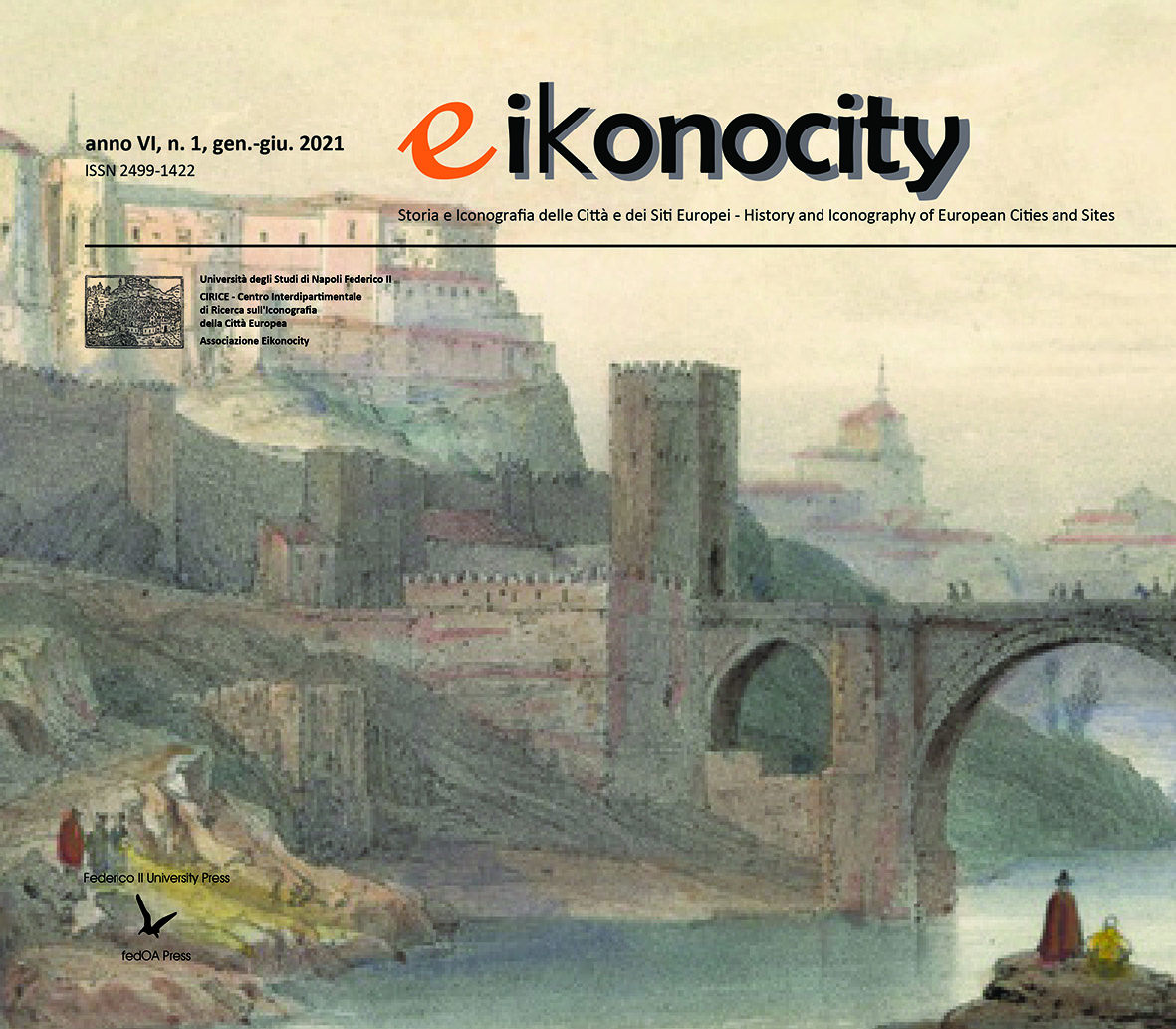Raccordare Napoli con una linea obliqua: il segno che inventò l’idea
DOI:
https://doi.org/10.6093/2499-1422/7866Abstract
La città obliqua is a pilot project that was born in the '80s from the genius of an urbanist architect, passionate about music and... Naples, who offered the community a structured and organic planning program, supported by in-depth investigations and the census of forgotten urban songs; it also took on an iconic value and recognition of a cultural trend matured in those years within the Faculty of Architecture so much so that the project was put in notes by one of his students, a famous singer-songwriter, who made it a musical piece. The design idea anticipated, in a futuristic dimension, what many years later - and still today - forms the subject of debate in both the scientific and social spheres. The project provides for the recovery of archaic routes flanked by means of lifts that today can be defined sustainable, at the time characterized by high technology with low emissions and reduced impact; a network of connections with the streets of the sea and the hill marshalling stations, subway parking, interconnections with existing subways and those still to be built at the time. All this to guarantee mobility in every part of the metropolis... practically on foot!
This contribution intends, on the one hand, to bring back to the memory and knowledge of the scientific community a project episode that, in its own right, finds its place in the extensive literature concerning the great experiments for Naples; on the other hand, by placing itself in that field of interest that dichotomatically integrates the representation of the territory, urban planning and transport, it intends to highlight the contemporaneity and effectiveness of the study conducted in 1984 to solve the mobility in Naples, integrating today perfectly with the new infrastructural system with which the city has been equipped.
Downloads
Downloads
Published
How to Cite
Issue
Section
License
Eikonocity pubblica in internet, ad accesso aperto, con licenza:
|
|
CCPL Creative Commons Attribuzione 4.0 |
L'autore conserva il copyright sul suo contributo, consentendo tuttavia a chiunque "di riprodurre, distribuire, comunicare al pubblico, esporre in pubblico, rappresentare, eseguire e recitare l'opera", purché siano correttamente citati l'autore e il titolo della rivista. L’autore, al momento della proposta di pubblicazione, è inoltre tenuto a dichiarare che il contenuto e l’organizzazione dell’opera è originale e non compromette in alcun modo i diritti di terzi, né gli obblighi connessi alla salvaguardia di diritti morali ed economici di altri autori o di altri aventi diritto, sia per testi, immagini, foto, tabelle, sia per altre parti di cui il contributo può essere composto. L’autore dichiara altresì di essere a conoscenza delle sanzioni previste dal codice penale e dalle leggi speciali per l’ipotesi di falsità in atti ed uso di atti falsi, e che pertanto Eikonocity è esente da qualsiasi responsabilità di qualsivoglia natura, civile, amministrativa o penale, e sarà dall'autore tenuta indenne da qualsiasi richiesta o rivendicazione da parte di terzi.


